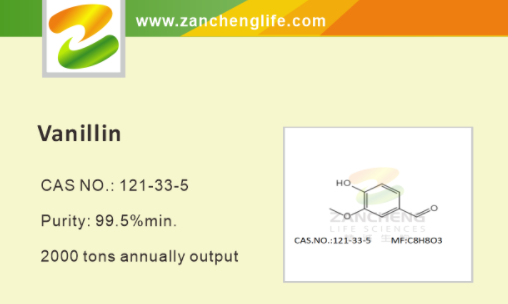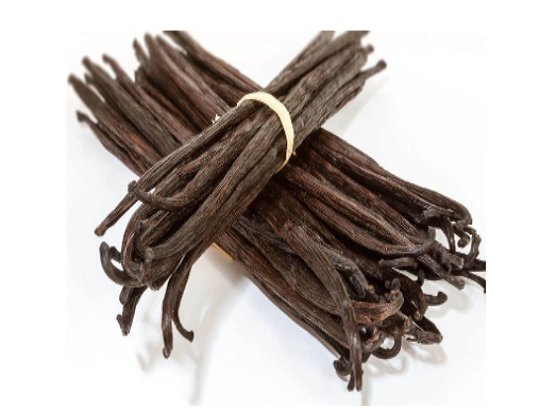Jun. 20, 2022
Vanillin is the main compound of vanilla bean extract. Today, vanillin is mainly used as a seasoning and is commonly used in sweet foods such as ice cream and chocolate. The molecular formula of vanillin is C8H8O3. Adding this ingredient to the food will give it a unique vanilla flavor.
Did you know that 99% of vanillin today is not from vanilla beans, but from synthetic production? It can be produced in different ways. ZANCHNEG introduces you to several methods.

Vanillin occurs naturally in vanilla beans. However, growing and processing vanilla beans is an expensive job, and we currently cannot grow enough vanilla beans to meet the world's demand for vanilla flavor!
Scientists have discovered a series of materials that contain molecules very similar to vanillin. These materials need to be rich and cheap enough to make it worthwhile to harvest these similar molecules. They can be converted into vanillin through a series of chemical reactions.
One disadvantage of most of these methods is that they require very stringent chemicals and stringent process conditions. However, they are commonly used.
Eugenol is a small aromatic molecule, just like vanillin. It can be extracted from spices such as cinnamon, nutmeg and cloves. Its structure is very similar to vanillin, see below. Both have a central benzene ring with the same group connected to two adjacent carbon atoms: OH- and -OCH3. The third group is different. Vanillin has-CHO group, while eugenol has -C3H5 group.
When converting eugenol to vanillin, manufacturers focus on converting the last group to vanillin. The conversion of eugenol to vanillin is one of the earliest methods invented. A major disadvantage is that eugenol is cheaper than vanilla, but it is still quite expensive.
Lignin is the main component of wood pulp. Lignin is a macromolecule composed of many smaller phenolic components. These individual components, such as coniferol, are very similar to vanillin. Once again, they have benzene rings that connect three groups. Two of them,-OH and-OCH 3, are the same as those in vanillin.
Under appropriate conditions, lignin can be decomposed into these individual components. Then these can be converted into vanillin.
Even if wood pulp is the main source of lignin, you can also use other sources. For example, researchers have found people who use cow dung.
In the 1970s, another route was found in the constant search for cheaper and more efficient vanillin. This chemical process uses guaiacol. Third, a molecule with a structure very similar to vanillin. The main source of guaiacol is the petrochemical industry.
Microbes are small organisms that usually consist of only one cell. Bacteria and yeasts are microbes. Over the years, scientists have been better at controlling and managing these microbes. There are so many that they can be used to make specific molecules, such as vanillin. Doing so would eliminate the need for the demanding chemical processes necessary to transform similar molecules.
In addition, the output of these methods, that is, the amount of material for mass production, is usually very low. A large number of microorganisms are necessary for the production of a small amount of vanillin.

Since the mid-19th century, we have been craving vanilla-whether it's ice cream or cookies. And we've been looking for new ways to get it. Who knows how we will get our vanillin decades later? Now you can contact us and buy the vanillin you need.
Navigation
Phone:
+86 151 5801 8208
+86 138 0570 9842
E-mail:
Add.:
ROOM 702, NO.318, HUAYUANGANG STREET, GONGSHU DISTRICT, HANGZHOU, ZHEJIANG, CHINA
Request a Quote